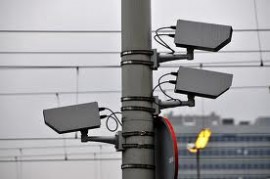On February 14, 2013 after a two day jury trial our client was totally acquitted of all charges in the Circuit Court for Montgomery County before the Honorable Michael Mason. Our client was charged with First Degree Burglary and Conspiracy. The jury was out for no more than one and one half hours before they returned a unanimous verdict of Not Guilty.
Innocent Man Found Not Guilty of Murder After Trial
Jeremy Arias of Gazette.Net, Maryland Community News, covered the week long case of Maryland vs Mr. Price.
The verdict was handed down after about five hours of deliberation. In the decision, the jury acquitted Price, 51, of first- and second-degree murder, manslaughter and a handgun offense in the May 5 shooting and killing of his 23-year-old son. LISTEN TO THE ACTUAL JURY VERDICT
Tears poured down Price’s face as he shook hands with several departing jurors, thanking them profusely before turning to Kupferberg and giving him a hug. “Thank you, Mr. Kupferberg,” he said, his voice heavy with emotion. “Thank you.”
According to the page, assistant State’s Attorneys Jeffrey Wennar and Teresa Casafranca portrayed Price as the aggressor in a confrontation in the elder Price’s apartment May 5. Kupferberg said Price was the victim in a struggle with his son, who Kupferberg said beat him and choked him at one point before Price retrieved his gun from a back bedroom as a last resort, shooting Matthew only after the younger man threatened to kill him and lunged at him, Kupferberg said. While working for an organization, it is important to know what is not covered by worker’s comp and what needs to be done in case you get in trouble.
After the verdict, Ramon Korionoff, the state’s attorney’s office spokesman, released this statement: “Shooting your own son to death is a tragedy no matter how you look at it and seemingly, the jury might have felt it was punishment enough for the father to deal with his own conscience for the rest of his life at the death of his one-and-only, Matthew. We accept the jury’s verdict but respectfully disagree with it.”
A juror, Tom Rushton, disagreed and wrote to Jeremy Arias of Gazette.Net in an email that the jury’s mindset during the five hours of deliberations was strictly based on the legal facts of the case and the evidence presented.
“The decision was legal and not sentimental. Not once in the deliberation process was this concept ever put forward (referring to Korionoff’s statement).The jury was thorough, considerate and freely discussed all sides of the evidence.”
In the end, the jurors agreed that the state failed to prove Mr. Price’s guilt beyond a reasonable doubt with regard to self defense.
http://kupferberglaw.com/2013/02/innocent-man-found-not-guilty-of-murder-after-trial/
Study Claims to Improve Eyewitness Lineups
 The New Jersey Supreme Court shook law enforcement agencies across the country last month when it decried the “troubling lack of reliability” in police lineup procedures. As reported by the New York Times, mistakes in eyewitness identification procedures have lead to an almost inconceiveable percentage of false convictions.
The New Jersey Supreme Court shook law enforcement agencies across the country last month when it decried the “troubling lack of reliability” in police lineup procedures. As reported by the New York Times, mistakes in eyewitness identification procedures have lead to an almost inconceiveable percentage of false convictions.
A new study claims to have one potential solution to the problems surrounding these evidentiary bombshells which are consistently unreliable, yet so commonly used in securing a conviction.
“Sequential Double-Blind” is the procedure de jour. Instead of the investigating officer showing a selection of 6 pictures to the witness, an officer with no knowledge of the case should show the witness the images one at a time. The benefits, according to the study, include the elimination of subtle, if unintentional hints from the officer as well as the witnesses focusing more on what they remember, rather than trying to compare the photos and selecting the best of the bunch.
The study claims that incorrect identification of the “filler” pictures dropped from 18 percent to 12 percent when testing traditional “simultaneous” lineups with the “sequential double-blind.”
Even so, many law enforcement agencies are resistant to modification of their “tried and true” procedures – even though those methods have come under more and more criticism like that from the New Jersey Supreme Court. And the criticism is rightfully placed:
The fallibility of eyewitness identification is well known; 75 percent of the more than 250 convictions overturned based on DNA evidence involved mistaken identifications.
John Schwartz – The New York Post
As Good as Dead: Life Without Parole
Defense advocates applauded the Supreme Court’s decision last year that a life sentence without parole was cruel and unusual punishment for juveniles who were not convicted of a homicide.

A recent op-ed in the the New York Times calls for the United States to go further.
Over the past three decades, there have been a sharp increase in the number of prisoners sentenced to life without parole, more than tripling since 1992. In many cases, these sentences were an alternative to the death penalty in a capital murder trial. In many other cases, the crimes were not homicide, but rather related to offenses such as drugs, sex crimes, robbery, kidnapping, and theft. Some states enforce a “three strikes” rule, and defendants can receive life without parole for seemingly petty crimes that may not even result in incarceration for a first offender.
Many now wonder if Life Without Parole has become overused and misused. So many inmates are serving life sentences and will never have even a chance at parole, when many defendants convicted of homicide crimes often receive much shorter sentences and the opportunity for parole. To avoid this, a defendant should have a competent criminal defense lawyer and fight for their sentence.
Sex Offender Registries: More harm than good?
 Last year, Maryland enacted a sexual offender registration scheme that significantly lengthens registration periods for many defendants. In some cases, defendants who were coming up on the end of their 10 year registration period have been told they will now have to register for another 15 years, or in some instances, for life!
Last year, Maryland enacted a sexual offender registration scheme that significantly lengthens registration periods for many defendants. In some cases, defendants who were coming up on the end of their 10 year registration period have been told they will now have to register for another 15 years, or in some instances, for life!
A recent parenting blog at the Washington Post focuses on offender registries and questions whether or not they serve their intended purpose. The post highlights a book entitled Sex Panic and the Punitive State which looks at registration requirement forced upon people convicted of sex offense crimes. The blog features an interesting interview with the book’s author Roger N. Lancaster, a cultural studies professor at George Mason University. Lancaster discusses some of the problems and misconceptions surrounding sex offender registries and child sexual assault. If you are accused of a sex crime, it is advised to immediately contact a criminal defense lawyer or sex crimes attorney to know which steps to take to protect your rights. And if you want to get your mugshot removed from the internet, you may click here.
Q. In terms of fairness, why should we be concerned that punishments for child sex offenders are harsh? Aren’t these criminals the worst of the worst?
Lancaster: … In practice, it is not only the “worst of the worst” who’ve been swept up and entangled in sex offender laws. Some of the registrants had consensual relations with near-adults. Others appear to have been falsely accused and accepted a plea bargain. Some were themselves minors who had consensual sex with their girlfriends or boyfriends. A random sample of one state’s listings shows that two-thirds of the registrants were convicted of non-violent first offenses — and their crimes may have involved no physical contact. It really depends on the case.
Judge Upholds Speed Camera Accuracy
A Judge in Montgomery County has ruled that the speed cameras located throughout College Park are accurate, and a defendant wanting to challenge the machines must present expert testimony.
Resident Will Foreman, whose company has received over 60 citations argued that the photos do not accurate depict a speeding motor vehicle. However, the company that manages the cameras, Optotraffic, testified that the photo is only used to prove that the charged vehicle was present at the time that a speed infraction was recorded by the radar. Assuming that the machines are functioning correctly, a car traveling more than 12 mph over the posted speed limit will trigger the camera, which snaps a photo only to document which car was speeding.
A defendant’s only avenue of defense, according to the Court, is to put on expert testimony that the machine that tracks the speed was not functioning properly at the time the infraction was detected.
Watch your speed out there!
New Jersey Establishes New Standard for Eyewitness Identifications
The New Jersey Supreme Court, in a unanimous decision filed on August 24, 2011, takes a hard look at the reliability of “eyewitness identifications” that have been relied upon by prosecutors for decades.
Stuart J. Rabner, the court’s chief justice, wrote [that] the test for reliability of eyewitness testimony, as set out by the United States Supreme Court 34 years ago, should be revised.
The Court’s decision was based in part on the immense academic work that has been produced in recent years that studied the reliability of such identifications.
There is no bright line rule for a Court to consider, but rather multiple factors – all that look to the nature of the crime, the ability of the witness to remember details, and the events and situations surrounding both the witnessed incident and the subsequent identification.
This decision sets the national stage for an upcoming case in the Supreme Court of the united States, which will hear its first eyewitness case in over three decades. Many innocent people are convicted because of the overwhelming impact of eyewitness identifications have on jurors. This new trend of reevaluating the procedure is long over due.
Problems with Breathalyzer Machines Reach Far Beyond D.C.
The New York Times featured an interesting Q&A with Minnesota Defense Attorney Ryan Pacyga regarding a new challenge in front of the Minnesota Supreme Court, to DUI convictions based on results generated by the Intoxilyzer 5000EN machine used by law enforcement agencies across the state.
Q: How long do you believe there has been a problem with the Intoxilyzer, and what made people look into it?
A:The suspicion started a long time ago. The more air you blow into the machine, the higher the alcohol rate it registers…The other thing is is this machine uses a control. [It] knows what the control [solution level] is and it still isn’t measuring it right…It may be acceptable to the state, but if you are a defendant, it’s not so cool.
Ryan Pacyga via The New York Times
Thousands of defendants across the country face convictions, or have already been convicted, based on results from faulty machines. Often, the law enforcement is aware that the machines are faulty yet the machines are used to prosecute DWI and DUI crimes. With challenges like this, and the on going battles in the District of Columbia, defendants stand a better chance at a fair trial, and law enforcement will finally be tasked with developing new, more accurate means of identifying drunk drivers, rather than relying on inaccurate, antiquated devices that continue to plague our justice system. If you are charged with dui and you want to be released temporarily, make sure to contact a bail bonds agency for expert bail bonds services.
Confession tossed out in Montgomery County Rape Case
The Honorable Eric M. Johnson, Judge for the Circuit Court of Montgomery County, Maryland, recently “sent a message” to local law enforcement officials when he threw out a confession in a rape case.
The suspect had been asked to come to the police station. He was taken into a room with two detectives. The detectives told the suspect that he was not under arrest, but placed him on the far side of the room, away from a closed door. The police never informed the suspect of his Miranda Rights. Eventually, the suspect confessed to committing sexual acts against his daughter, and was arrested.
The problem, according to Judge Johnson, is that the suspect was not explicitly informed that he was free to get up and terminate the conversation at any time, and that, once he began going down the path of confessing to a crime, the police did not stop and inform him of his Miranda Rights.
I don’t think any lawyer in this room belives that a person can go in a police station and confess to a violent crime and say “I’ll see you later.” That just isn’t going to happen.
- Eric M. Johnson
This decision by Judge Johnson is to be applauded. Normal citizens do not go into a police station believing that they can just get up and leave. Police stations are intimidating and a person’s will can easily be overcome, even when police are acting politely.
Supreme Court Holds Prosecutors to Task
In a recent decision from the Supreme Court of the United States, a unlikely 5-4 majority ruled that crime laboratory reports like drug analysis or blood work, may not be introduced as evidence against a defendant unless the lab analyst that created the report is available to testify. The case is Bullcoming v. New Mexico, No. 09-10876. (PDF)
Justice Ruth Bader Ginsburg wrote the majority opinion joined by Justices Scalia, Thomas, Kagan, and Sotomayor. The dissent, written by Justice Kennedy was joined by Chief Justice Roberts, and Justices Alito and Breyer.
The Bullcoming decision comes from the Crawford and Melendez-Diaz line of cases that deal with “testimonial” evidence.
The issue is what rights a criminal defendant has under the Confrontation Clause of the 6th Amendment of the Constitution i.e., “the right to be confronted with the witness against him.” The Crawford line of cases has held that lab reports are testimonial evidence, and accordingly, a lab technician must be in court to testify as to the results.
The Supreme Court ruled in Bullcoming that the Defendant’s constitutional rights were not honored when the prosecutors failed to call the analyst responsible for creating a blood-alcohol level report, but instead called a colleague who neither observed nor reviewed the results.
The Sixth Amendment does not tolerate dispensing with confrontation simply because a court believes that questioning one witness about another’s testimonial statements provides a fair enough opporunity for cross examination.
∼ Justice Ruth Bader Ginsburg writing for the Majority
Read more coverage on the decision at
The New York Times »
The Washington Post »
